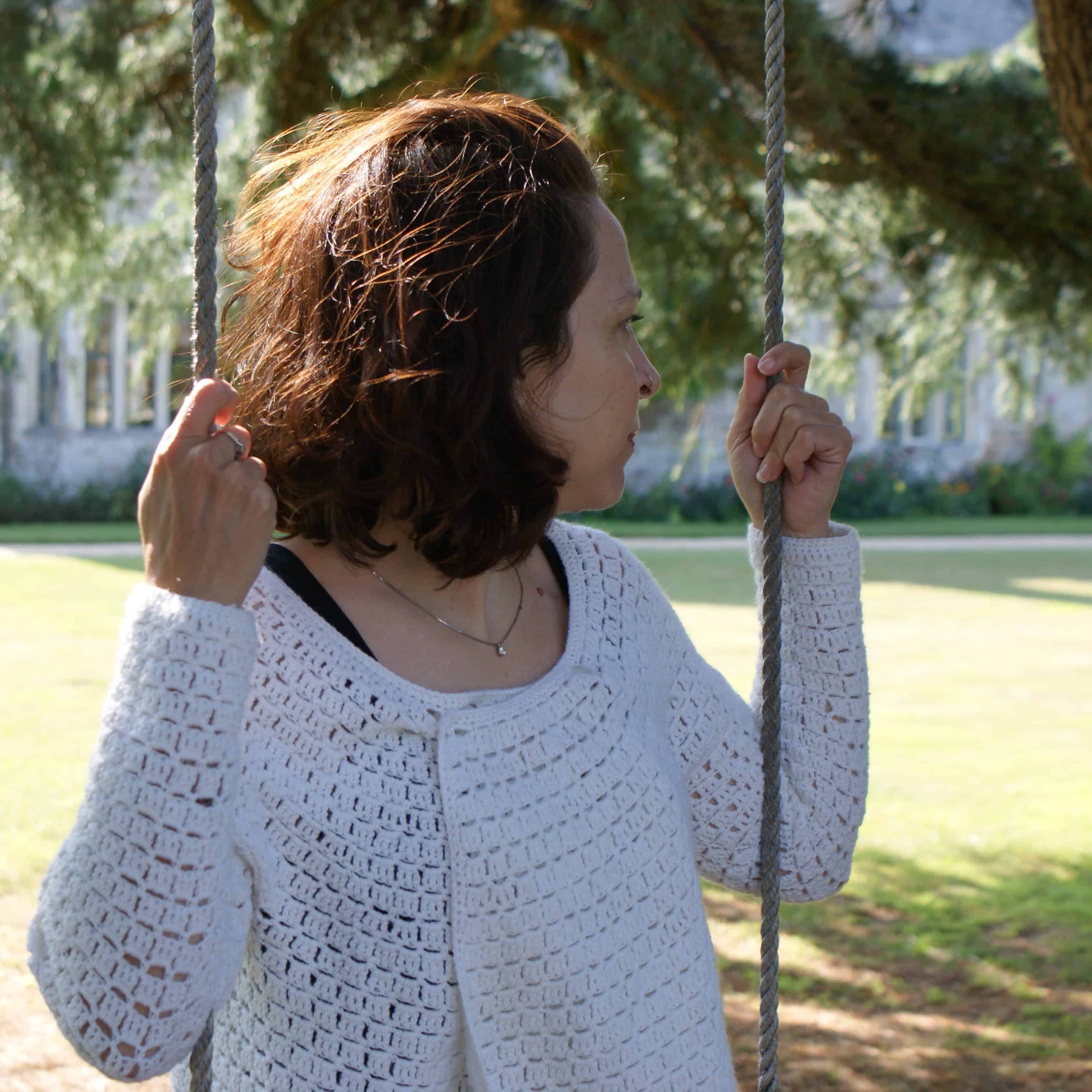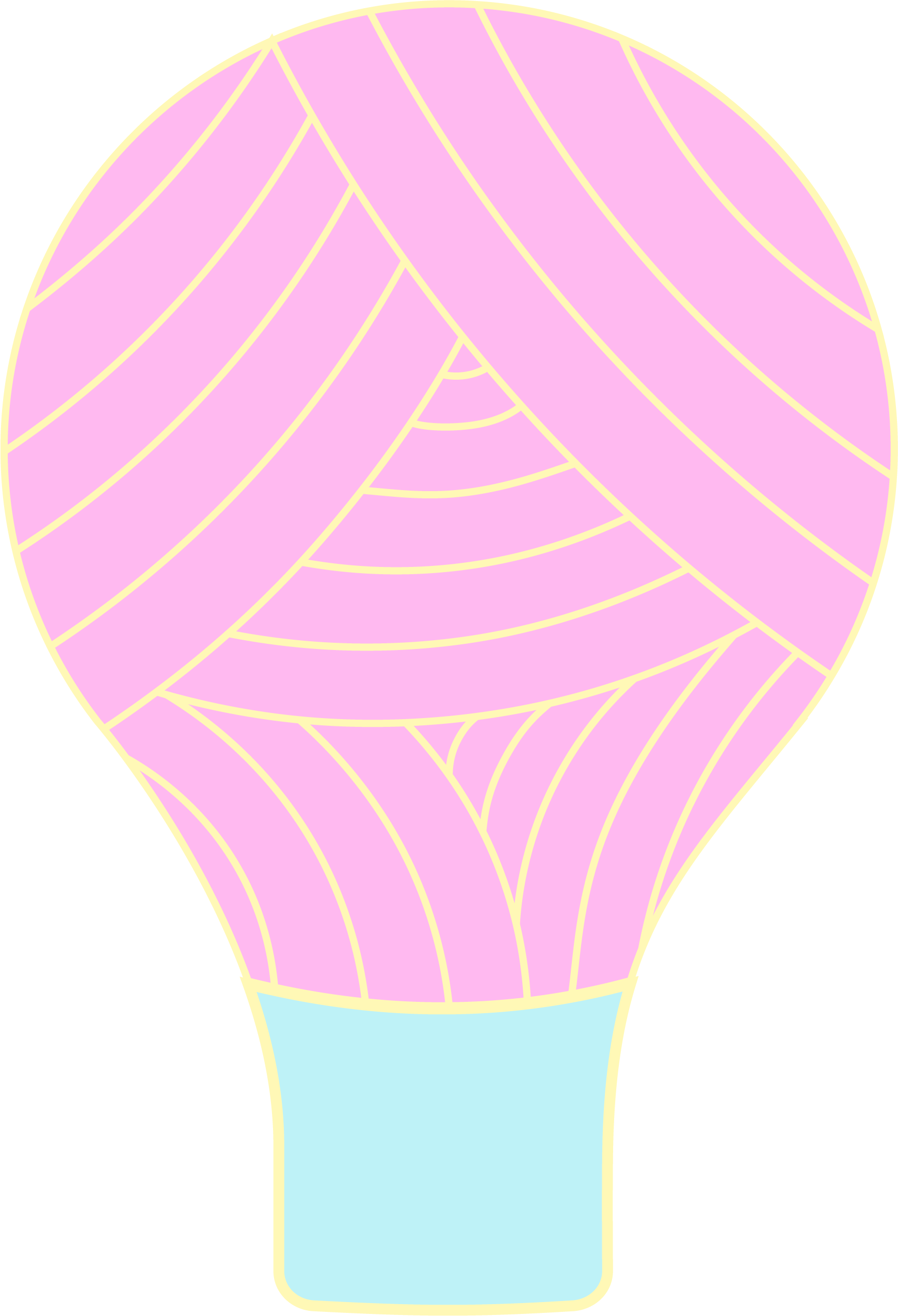Abundance – Crochet Waterfall Cardigan Pattern

‘Abundance’ is a round yoke, floaty crochet cardigan pattern which uses simple stitches and is written in 7 women’s sizes.
With fitted long sleeves and draping fabric, this crochet cardigan can be worn double breasted, fastened at the neck, or left open waterfall style.
The crochet cardigan is worked using the seamless top down method. If you are not familiar with this method, please have a look at this blog post which explains why it’s such a great way to make sweaters and cardigans!
You can purchase the pattern now from Ravelry, Love Crafts Crochet or Etsy


This post contains affiliate links. This means if you click a link to a product and go on to make a purchase, I receive a small percentage of the sale at no extra cost to you. You can read my full affiliate disclosure here.

Pattern Notes
General Notes
- Please read through the pattern and all associated notes before starting your project
- This pattern uses standard US crochet terminology (UK equivalents are given in brackets in the abbreviations list where applicable) Numbers in brackets at the end of a row / round indicate the number of stitches in that row / round and are only given at the start of a section or where there is a change
- This cardigan uses the ‘block stitch’ pattern and stitch counts are given for the number of ch3-spaces or stitches and blocks (groups of 3 stitches) (block counts these exclude the 2 stitches on either end of the row)
- Ch1 turning chains do not count as sts
- Ch3 at the start of the row counts as an extended double crochet (see special stitches)
- Instructions after * should be repeated as indicated
- Instructions between [square brackets] should be repeated the number of times indicated
- Unless otherwise indicated stitches should be worked in consecutive stitches
- Right and wrong sides are nominal
- As a rule of thumb, and for the purpose of the instructions, the extended double crochet (see special sts) rows are right side (rs) rows and the chain rows are wrong side (ws) rows
Construction
- The cardigan is made top down in rows using a round yoke, increasing from the neckline to the underarms
- If you want to learn more about top down construction, visit this blog post
- For the yoke section, increases are made over 2 blocks on a chain row
- The yoke is split and you continue to work the body then sleeves top down so the finished cardigan is seamless

Skills Used
I would class this as an intermediate pattern which uses a simple stitch pattern. It uses the following skills
- Knowledge of basic crochet stitches, techniques and terminology is assumed
- Working in rows and rounds
- Increases and decreases
- Keeping careful count of stitches in increase sections
- Chainless foundation rows
- Use of stitch markers
The pattern works in block stitch using extended double crochet (UK extended treble) stitches which is a simple modification of the standard double crochet (UK treble) .
You can find a tutorial for block stitch as part of the Maslow’s rainbow tutorial – this uses double crochet instead of extended double but the principle is the same!
This pattern uses US crochet terms.

Materials
Crochet Hook
You will need a 4mm (US G/6) crochet hook, or size needed to obtain gauge. I used my clover amour hook.
Yarn
Drops Flora, 4ply / fingering weight yarn (65% Wool, 35% Alpaca), 50g balls(210m / 231yds), Shade 02, White
7 (7, 8, 9, 10, 11, 12) x 50g balls or 300 (350, 400, 450, 500, 550, 600)g for sizes XS(X, M L, 1X, 2X, 3X) respectively.
If using a different yarn, the approximate meterage required is 1250(1365, 1535, 1760, 1970, 2200, 2400)m.
Yarn Substitution Options
A yarn of a similar weight and fibre which meets gauge can be used for this cardigan.
4ply acrylic yarn could also work if you are vegan, prefer not to use or are allergic to animal fibres.
Different fibres and yarns will produce a different finished result. You may find this post useful when choosing yarn.
Other Materials & Notions
- Yarn needle, scissors and a tape measure
- 2 buttons approx 15mm in diameter
- 4 stitch markers or scraps of yarn for marking the sleeves when splitting the yoke
You may wish to block this project to get the most of the stitch pattern, in which case I recommend a blocking matt and pins. Learn more about blocking here.
How to purchase a Dora Does crochet pattern:
I sell my PDF crochet patterns in my Etsy, Ravelry and Love Crafts stores. You can purchase this pattern on any of these platforms, depending on your preference. Simply click the relevant links throughout this pattern page to be taken to the listing, or visit the store homepages in the links at the start of this paragraph.

Measurements and Finished Size
- The cardigan is designed to be fitted around the sleeves (with zero ease) and an abundance of fabric around the fronts.
- Approximate measurements of the finished garment are given below to help you in choosing a suitable size for you / the recipient of the garment
- It is worth paying particular attention to the upper arm / bicep measurement when choosing your size as this area is fitted
- The pattern is designed for adults and offered in 7 women’s sizes
- Instructions for different sizes are written in increasing order, with the smallest size first and larger sizes following in brackets; i.e. XS(S, M, L, 1X, 2X, 3X) sts or Rows / Rounds
- The item you see pictured is a size S worn by me, UK size 8-10 (US 4-6), 5ft 1in.
Approximate finished sizes
Sizes are given in cm for XS(S, M, L, 1X, 2X, 3X)
- To fit bust: 76(86, 96, 106, 116, 126, 136) – note that because this has a wrap over front section, I have used the ‘to fit bust’ measurement here as a rough guide
- Length (back neck to hem): 47(47, 48, 50, 52, 53, 53)
- Upper arm circumference (bicep): 27(29, 31, 35, 38, 39, 43)
- Armhole depth: 19(19, 20, 22, 23, 25, 25)
- Sleeve length: 39(41, 41, 42, 42, 44, 44)
Because the pattern uses the top down method, you can easily adjust the fit as you go!!
You can find tips on working top down garments here and more details on adjusting top down sweaters in this post.
Stitches & Abbreviations: US terms
(UK Equivalent in Brackets)
- ch = chain
- dec = decrease (signifies a decrease row/round)
- edc = extended double crochet (UK extended treble)
- fdc = foundation double crochet (UK foundation treble)
- inc = increase (signifies an increase row/round)
- rep = repeat
- rs = right side
- sc = single crochet (UK double crochet)
- sk = skip (UK miss)
- sp = space
- ss = slip stitch
- st(s) = stitch(es)
- ws = Wrong side
- yo = yarn over
Special Stitches
Foundation Double Crochet (fdc)
Ch3, yo, insert hook into third chain from hook, yo and pull up a loop (3 loops on hook). *Yo and pull through 1 loop (this creates the base chain of the next fdc). Yo and pull through 2 loops (2 loops on hook), yo and pull through 2 loops to complete the st. To start the next st, yo and insert the hook under the v of the base chain you just created, yo and pull up a loop. Repeat from * for the number of stitches required.
You can find more details on foundation rows including a tutorial here
Extended Double Crochet (edc)
Yo, insert hook, yo, pull up a loop (3 loops on hook), yo, pull through 1 loop (3 loops on hook), yo, pull through 2 loops (2 loops on hook), yo, pull through 2 loops to complete the stitch.
You can find a video tutorial for the extended double crochet here
Gauge
21 stitches (7 blocks) x 12 row in 10 cm of the block stitch pattern (see below) using a 4mm hook or size needed to meet the gauge.
The gauge is based on a gently blocked swatch. Variation in your gauge will lead to variations in the finished size of your project.
Learn how to make and measure a gauge swatch here
Stitch pattern for gauge
The block stitch pattern uses a stitch multiple of 3+2 sts over 2 rows.
Make a chain of 3+2, add 2 for turning chain (does not count as a stitch here)
Row 1: 1edc in third ch from hook and each ch to end, turn
Row 2: Ch1 (does not count as st), 1sc between first and second st, *ch3, skip 3 sts, 1sc between next 2 sts; rep from * to end making your last sc between the second last and last st, turn
Row 3: Ch3 (counts as 1edc), 3edc into each ch3-sp across to the end, 1edc into the top of last st, turn
Repeat rows 2 and 3 for pattern rep.

Purchase the PDF pattern from Ravelry, Love Crafts Crochet or Etsy
The Abundance Crochet Cardigan Pattern

How to share your finished makes
I hope you enjoy the pattern and, as always don’t forget to share your efforts!
- On Instagram, you can use the hashtag #DoraDoes to share your finished projects or just tag me @doraexplored
- If you have the bug for creating garments, why not join my dedicated facebook group “My Crochet Wardrobe” and share them there?
- Sign up to the WiP Tip for weekly crochet chat, offers and exclusives straight to your inbox – click here to sign up
Happy Hooking
Dx
I’ll leave you with a few more shots I’ managed to snag in the unexpected February sunshine we had this week!
More Crochet Cardigan Patterns





Copyright Dora Does Limited, Registered in England, Company Number 13992263. This pattern is for personal use only and may not be shared or reproduced in written, photo, video or any other form without prior written consent. All rights reserved. Terms of service.






Dora for Queen !!!! 😀
😂😘